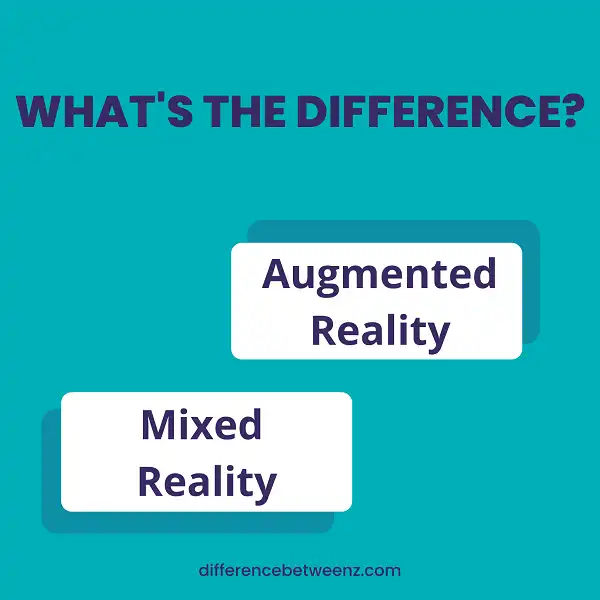Augmented Reality (AR) and Mixed Reality (MR) are two different technologies that are often confused with one another. AR enhances the real world with digital content, while MR creates a completely virtual world. Here we’ll take a look at the key differences between these two exciting technologies.
What is Augmented Reality?
Augmented reality (AR) is a live direct or indirect view of a physical, real-world environment whose elements are “augmented” by computer-generated perceptual information, ideally across multiple sensory modalities, including visual, auditory, haptic, somatosensory, and olfactory.
- The overlaid sensory information can be constructive (i.e., additive to the natural environment) or destructive (i.e., masked by the virtual object). It is also possible to overlay atmospheric conditions on the real world; for example, the field of view could include infrared analysis indicating where a heat source is located.
- AR can provide enhanced views of scenes in which conventional displays would be difficult or impossible to use. For example, AR might be used to display thermal data or other information about an object that would otherwise be invisible to the human eye.
AR technology is used in a variety of applications, including military training and maintenance, civilian law enforcement and search and rescue operations. It has been used extensively in video gaming and entertainment applications as well.
What is Mixed Reality?
- Mixed reality (MR) is a term used to describe the blending of the physical and digital worlds. Using MR technology, users can interact with computer-generated objects in a real-world environment.
- This interaction is made possible through the use of special headsets that track the user’s movement and allow for the projection of digital images onto real-world surfaces.
- MR is often used for gaming and entertainment purposes, but it also has potential applications in education, training, and other areas. For example, MR can be used to create realistic simulations that can be used to teach students or trainee professionals. Additionally, MR technology has been used to create immersive museum experiences and even theater productions.
Difference between Augmented Reality and Mixed Reality
Augmented reality (AR) is an enhanced version of reality created by the use of technology to overlay digital information on an image of something being viewed through a device, such as a smartphone. Mixed reality (MR), on the other hand, is a blend of AR and virtual reality (VR) that generates realistic environments where physical and digital objects can interact.
Both AR and MR are still in developmental stages with potential applications in gaming, education, healthcare, manufacturing, and retail among others. While AR adds computer-generated imagery to our natural world, MR goes one step further by digitally creating an environment that interacts with the real world. The key difference between the two is that while augmented reality augments our view of reality, mixed reality creates an entirely new reality.
Conclusion
Augmented Reality is an enhanced version of reality created by adding digital information to the user’s environment. Mixed Reality is a combination of Augmented Reality and Virtual Reality, which creates a more immersive experience by allowing users to interact with virtual objects as if they were real. In both cases, the user’s view of reality is altered in some way.
However, there are key differences between the two that set them apart from one another. For example, while Augmented Reality can be used for entertainment purposes (such as games or watching movies), Mixed Reality has more potential for practical uses in fields such as education and training.


